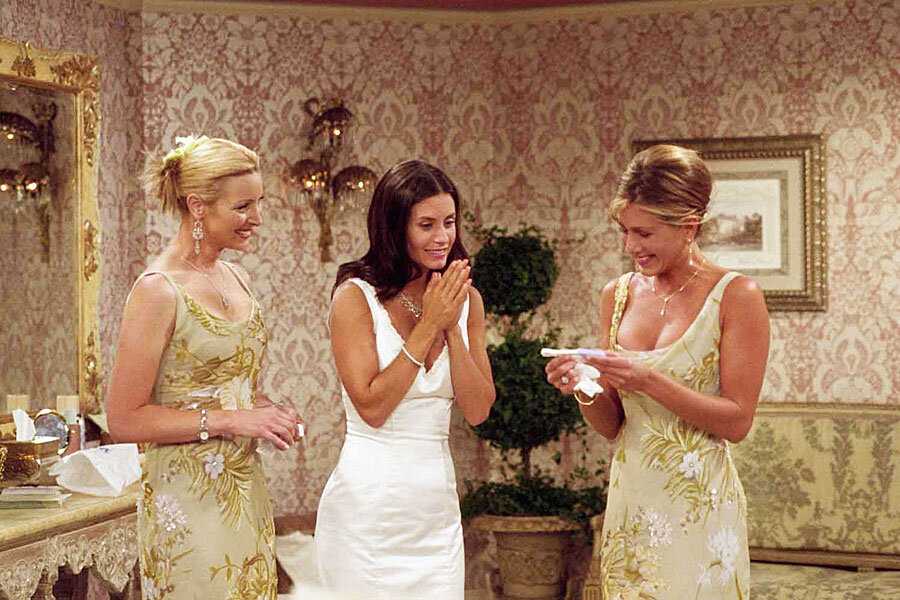Why is 'Friends' still so popular?
Loading...
When NBC tweeted Wednesday a vague, 44-character news announcement that included the hashtag, “#FriendsReunion,” the world went bonkers. Reaction gifs were evoked. Memes were created. Nearly a thousand news articles materialized in less than 24 hours, fueling the frenzy over a TV show that ended well over a decade ago.
Except, the reunion itself isn’t a “Friends” reunion per se. The six main cast members will appear together in a two-hour special – not for a revival episode but a tribute event to the comedy director James Burrows, who directed 15 “Friends” episodes in his prolific career in television. The tribute celebrates his 1,000th-episode mark.
The actors, in fact, may not even be in the same room during the special.
“I’m hoping all six will be in same room at same time. I’m not sure we can logistically pull it off,” NBC entertainment chairman Robert Greenblatt told reporters.
But executives knew that #FriendsReunion, however ambiguous, would create a buzz. After all, “Friends” remains one of the most widely syndicated shows on TV, counting up to eight reruns every day between TBS and Nick at Nite. In Britain, where the show is broadcast on Comedy Central, viewership has grown 11 percent since 2015. And who knows how many viewers, both new and old, are streaming the sitcom on Netflix.
It’s been 12 years since the series finale, but "Friends" hasn’t lost any of its cultural clout. If anything, nostalgia for the antics of Ross, Rachel, Monica, Chandler, Phoebe, and Joey has rekindled its popularity.
For critics, it’s a perplexing – and often annoying – cultural phenomenon. The show was never considered groundbreaking or profound in its musings. Compared to the other quintessential 90s TV marvel, “Seinfeld,” “Friends” is often considered insipid in humor and derivative in premise. When it premiered in 1994, reviews were tepid at best.
“NBC's new sitcom "Friends" comes across like a 30-minute commercial for Dockers or Ikea or light beer, except it's smuttier.… [The actors] all look nice, and it's sad to see them degrading themselves,” one critic wrote in The Washington Post.
And yet.
The current popularity of “Friends” can be attributed, in part, to a wider nostalgia for the 90s. For instance, the 1995 comedy “Clueless” experienced a colossal revival two or three years ago, the peak of which was when rapper Iggy Azalea replicated the film in a music video. In the ranks of flannel, TLC, and cassette tapes, “Friends” have been reintroduced – thanks to Netflix – to Millennials too young to have watched the early seasons.
But there’s more to it than Clinton-era zeitgeist. What makes “Friends” so special, so fervently loved, and so viral in 2016 is its championing of lighthearted pleasantries. Its most chided elements – the provision of comfort and shallow pleasure – turn out to be the show’s most effective assets.
“The tug of nostalgia is strong, but Friends, which was ‘nothing more’ than a very funny, anxiety-free sitcom starring a supremely talented cast, almost doesn’t require nostalgia to be glowingly appreciated from this particular vantage point,” Salon’s Willa Paskin writes on the 20th anniversary of the show. “The pure pleasure-giving sitcom has never been a rarer thing.”
Beyond the general sentiment of delight, the script was also able to accomplish astute character development, aided by a cast of superb actors, of course.
In a blogpost on the Huffington Post, TV producer M. Scott Veach sheds some light on how “Friends” was able to grasp one of most coveted elements of good writing – empathy:
I read a study once about some cognitive scientists who had discovered a part of the brain they called "mirror neurons." If I remember the study correctly, the idea behind mirror neurons is that they activate when you see/watch something that you perceive to be "like yourself in some significant way."
...
I have no idea if anyone has studied this further but I do vividly remember reading that article and knowing exactly what they were talking about. I remember experiencing that same feeling when I watched Friends for the first time. I was 20 years old at the time and I remember, quite vividly, having a feeling of recognition mixed with aspiration. I saw parts of myself in Ross and Chandler (as I suspect all people do) and I saw many ways that I would like to be in Ross and Chandler (wealthy, attractive, etc).
And who wouldn’t want to have friends like Chandler and Ross?








